Your Guide to Icelandic Christmas Traditions
Experience the enchanting world of Icelandic Christmas traditions, steeped in centuries of customs, folklore, and festivities. From pre-Christmas celebrations to post-holiday traditions, Icelanders truly know how to make the most of the Yuletide season. Take a journey through Iceland’s rich cultural heritage during the festive season and witness the magic of this European Christmas tradition.
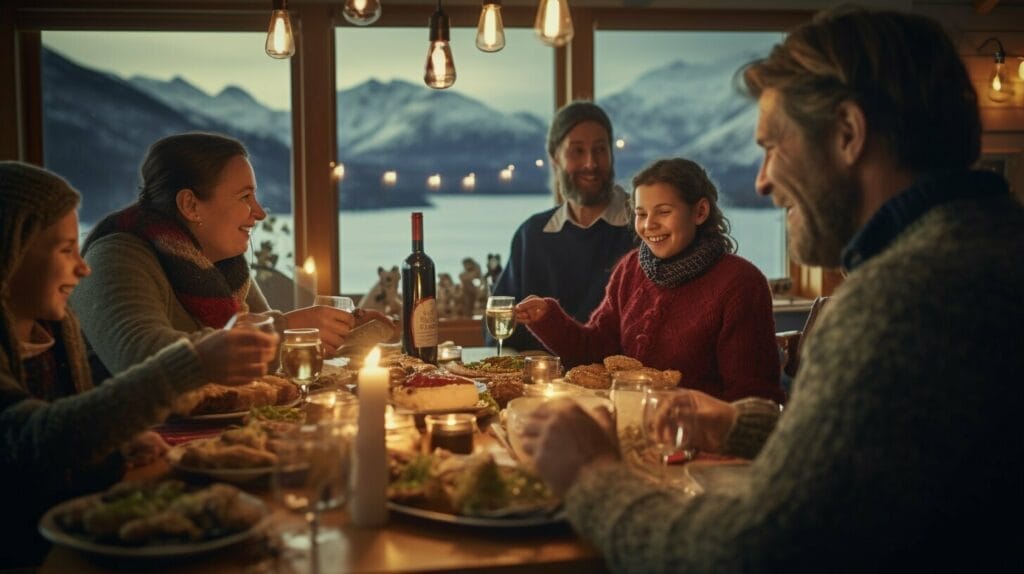
Quick Summary
- Discover the unique customs, folklore, and festivities of Icelandic Christmas traditions
- Experience the joyous pre-Christmas celebrations, including Advent calendars, winter solstice, and Yule town festivities
- Indulge in the delectable flavors of Icelandic Christmas cuisine, including traditional dishes and festive drinks such as glögg
- Explore the enchanting Christmas Eve and Christmas Day traditions, including midnight mass and family feasts
- Immerse yourself in the folklore and superstitions surrounding Icelandic Christmas, including the Yule Lads, Icelandic Santa Claus, and the Yule Cat
Pre-Christmas Festivities in Iceland
The advent season in Iceland is a time of anticipation and excitement. Advent calendars and lights are used to mark the countdown to Christmas Day. Advent calendars are often used to give small gifts to children every day in December leading up to Christmas. The enchanting display of lights is used to brighten up the dark winter nights, and many cities and towns have light displays that are worth checking out during the holiday season.
Many Icelandic Advent calendars are handmade and unique. They often have pockets or small bags that are filled with chocolates or small gifts. Children in Iceland look forward to opening their Advent calendar every day in December and finding out what surprise awaits them.

Celebrate the Winter Solstice like Icelanders do
The winter solstice, which occurs around December 21st, is also a significant event in Icelandic culture. It marks the shortest day of the year and the beginning of the gradual return of sunlight. Winter solstice celebrations have been an important tradition in Iceland since ancient times, and they often involve bonfires, singing, and dancing.
If you happen to be in Iceland around the winter solstice, why not join in on the celebrations? Many communities in Iceland host events and festivals to mark the occasion. You can enjoy traditional Icelandic treats and get to know some of the locals as you celebrate this important cultural event together.
Yule Town Celebrations
Experience the magic of Yule Town Celebrations in Iceland. These vibrant communities come alive with music, dance, and traditional festivities during the holiday season.
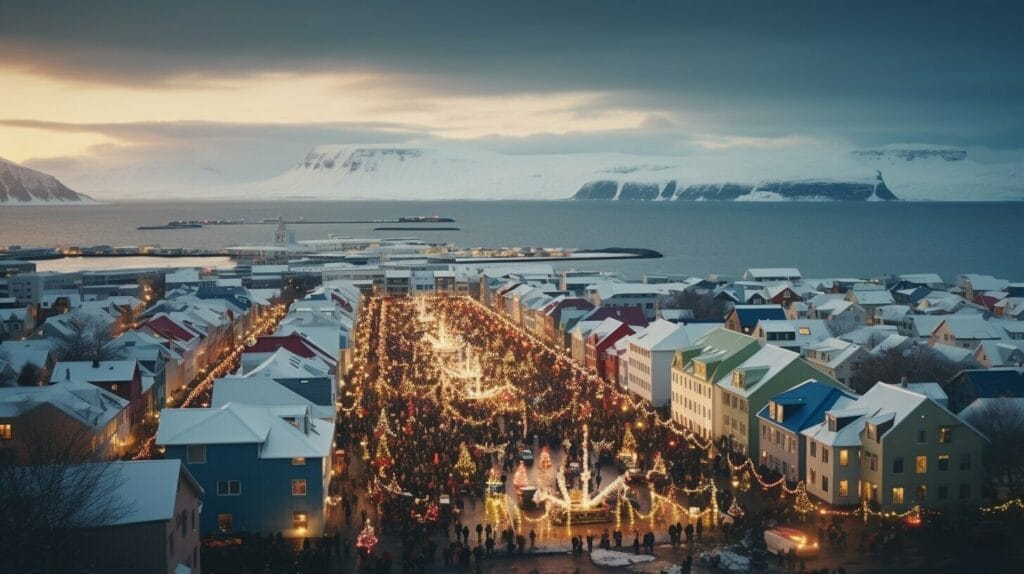
Yule Towns are dotted throughout the countryside of Iceland, each offering its unique charm and character. These towns are known for their heartwarming Christmas events, marketplaces, music, and dance. Soak in the festive atmosphere as you explore the colorful marketplaces and fairs where you can find unique gifts and delicious treats.
One of the highlights of Yule Town Celebrations is the Jólahátíð Festival held every year in the capital city Reykjavik. This festival offers everything from classical music concerts and plays to Icelandic Christmas carol singing, dance performances, and much more.
The festivities extend beyond Reykjavik. Many towns and villages throughout Iceland have their unique Yule Town celebrations, offering exciting and unique experiences to all visitors. Witness the beautiful lights that illuminate the town squares and streets of these picturesque communities, and immerse yourself in the joy of Icelandic Christmas traditions.
Icelandic Christmas Foods and Drinks
Iceland has a rich culinary heritage, and this is especially apparent during the Christmas season. Traditional Icelandic Christmas dishes are a feast for the eyes and taste buds alike.
| Dish | Description |
|---|---|
| Hangikjöt | Smoked lamb |
| Rjúpa | Roasted wild grouse |
| Laufabrauð | Intricately patterned flatbread |
| Skyr | Tangy dairy product similar to yogurt |
One of the most iconic festive treats in Iceland is laufabrauð, a type of flatbread that is intricately patterned with cut-out shapes. It is made by rolling out the dough thinly, then cutting out patterns with special tools. The bread is then fried in oil until crispy.
Another must-try Christmas drink is Glögg, a warm spiced wine that is enjoyed by many Icelanders during the holiday season.
Skyr, a creamy and tangy dairy product similar to yogurt, is also a popular dessert during Christmas. It is often served with a berry sauce or mixed with sugar and whipped cream.
Christmas in Iceland is all about family feasts, and there are many dishes that are enjoyed during this time. One of the most popular is hangikjöt, smoked lamb served hot or cold. Another is rjúpa, a type of wild grouse often roasted and served with traditional accompaniments like potatoes, red cabbage, and lingonberry sauce.
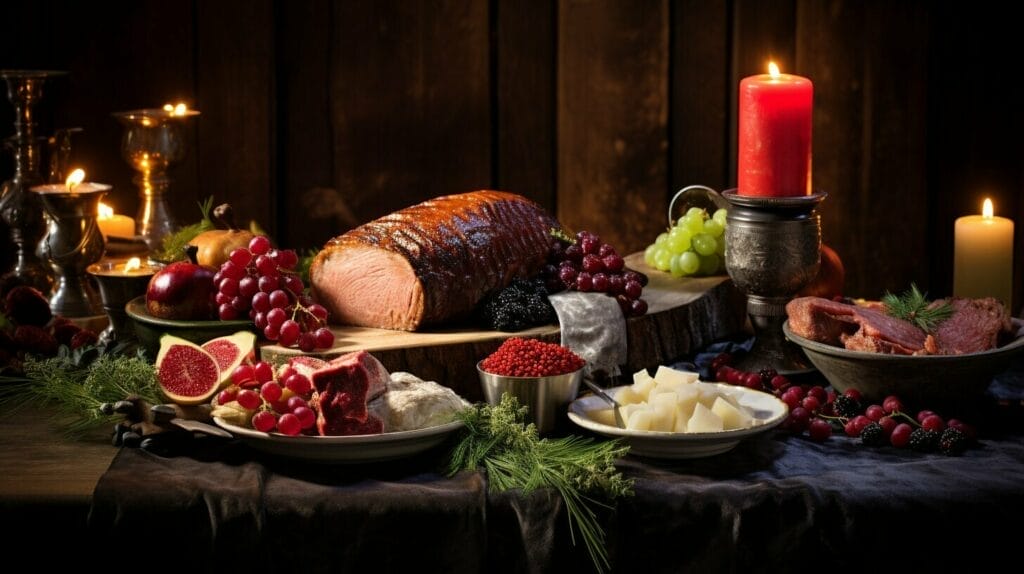
Of course, no Christmas feast in Iceland would be complete without a range of delicious drinks. In addition to Glögg, many Icelanders enjoy a variety of other Christmas drinks during the festive season, including a traditional Icelandic malt drink called Malt og Appelsín, and Jólabland, a non-alcoholic Christmas soda with a fruity flavor.
Christmas Eve Traditions in Iceland
Christmas Eve in Iceland is a time for family, reflection, and celebration. The evening is typically spent with loved ones, attending midnight mass, and enjoying traditional holiday foods and drinks.
One of the most important Christmas Eve traditions in Iceland is attending midnight mass. Many Icelanders attend mass in beautifully adorned churches, singing Christmas hymns in Icelandic. The service is often followed by a festive family meal, which typically includes delicious Icelandic Christmas dishes such as smoked lamb, pickled herring, and laufabrauð (intricate patterned flatbread).

After the meal, it’s time for the exchange of gifts. Icelanders typically open their presents on Christmas Eve, rather than waiting until Christmas Day. This tradition dates back to the early 20th century when a law was passed prohibiting the lighting of candles on Christmas Day, as a fire prevention measure.
Another popular Christmas Eve tradition in Iceland is the preparation of jólabókaflóð or “Christmas book flood.” Icelanders give each other books as gifts on Christmas Eve and spend the rest of the evening reading and enjoying hot cocoa with whipped cream.
Overall, Christmas Eve in Iceland is a magical and special time of year that is steeped in tradition.
Christmas Day and Boxing Day Traditions in Iceland
Christmas Day is an important day for families in Iceland, and it is a time for enjoying festive meals and exchanging gifts.
Typically, most people in Iceland attend church services on Christmas Eve, but some may also attend services on Christmas Day. Afterward, families gather together to share a meal and open presents.
Traditional Icelandic foods such as lamb, smoked salmon, and roasted potatoes are common dishes on a Christmas Day feast. Families may also indulge in festive desserts like Skyr cake or rice pudding known as Risalamande.
Boxing Day, also known as St. Stephen’s Day, is a time for relaxation and reflection. It is common for people to take a break from the hustle and bustle of holiday festivities to enjoy some downtime. Many Icelanders will go for a walk in nature or visit with friends and family.
If you’re in Iceland during the holidays, make sure to try some traditional Icelandic foods and enjoy the warmth and hospitality of the locals.
Twelve Days of Christmas
While many cultures celebrate only a single day of Christmas, Iceland celebrates for twelve straight days. Known as the Twelve Days of Christmas, this extended holiday period is marked by various unique traditions and festivities. Each day has its own significance and is celebrated in its own special way. The final day, Twelfth Night, is especially important and is marked by a grand celebration.
The first day of the Twelve Days of Christmas is December 24th, Christmas Eve. This day is traditionally spent with family, attending church services, and sharing a festive meal. The second day is Christmas Day, which is also spent with family and enjoying the gifts exchanged the night before.
On the third day, Icelanders begin to visit friends and relatives, sharing food and drink and enjoying each other’s company. This continues throughout the Twelve Days of Christmas, with each day focused on a different aspect of celebration.
One of the most popular traditions of the Twelve Days of Christmas is the singing of traditional Christmas hymns and carols. Icelandic carol singing is known for its unique harmonies and beautiful melodies, and can be heard throughout the holiday season.
The final day of the Twelve Days of Christmas, Twelfth Night, is a time for celebration and reflection. It is traditional to gather with friends and family for one last festive meal before the end of the holiday season. Many Icelanders also attend the Twelfth Night concerts, which feature traditional music and dance performances.
The Twelve Days of Christmas in Iceland are a time of joy, celebration, and community. Whether you are attending a festive marketplace or enjoying the company of loved ones, this extended holiday period offers a unique opportunity to experience the magic of Icelandic Christmas traditions.
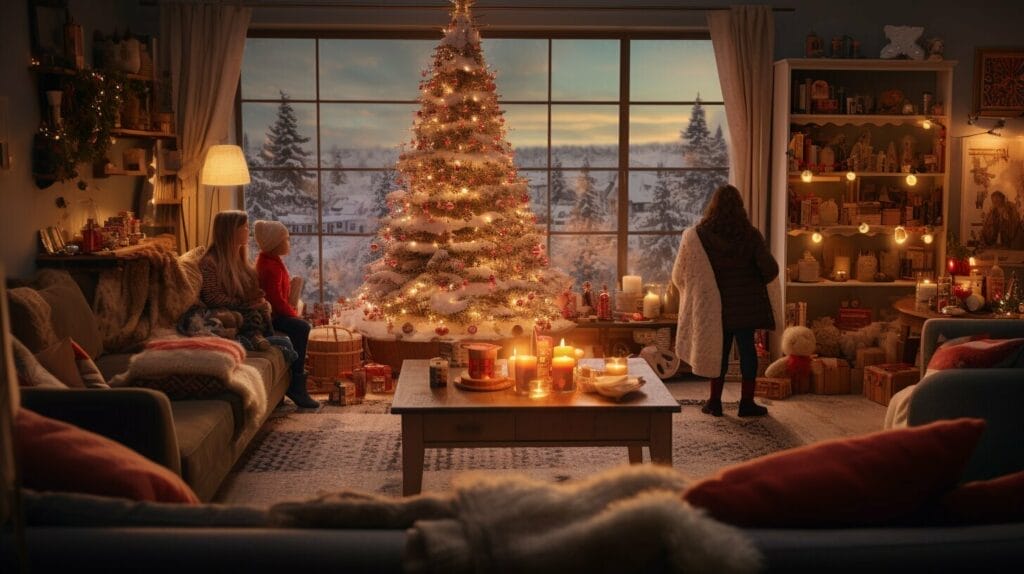
Winter in Iceland is the perfect time to embrace the snow and enjoy a variety of outdoor activities. From skiing and snowboarding to ice skating and snowshoeing, there is something for everyone to enjoy.
If you’re a skiing enthusiast, Iceland’s ski resorts are the perfect place to hit the slopes. With stunning vistas and well-groomed trails, you can enjoy some of the best skiing in Europe. Whether you’re a beginner or an expert, there are trails suited to your skill level.
If you prefer snowboarding, there are plenty of snowboarding parks and resorts to choose from. Test your skills on the half-pipe or try out the challenging rails and jumps.
Skating is also a popular winter activity in Iceland. Many towns have outdoor skating rinks, and Reykjavik’s Tjörnin pond is transformed into a skating wonderland during the winter months.
For those who prefer a more leisurely pace, snowshoeing is a great option. Enjoy the serene beauty of the Icelandic countryside as you trek through the snow-covered landscapes.
Whatever your preference, Icelandic winter activities are sure to get your adrenaline pumping and create lasting memories.
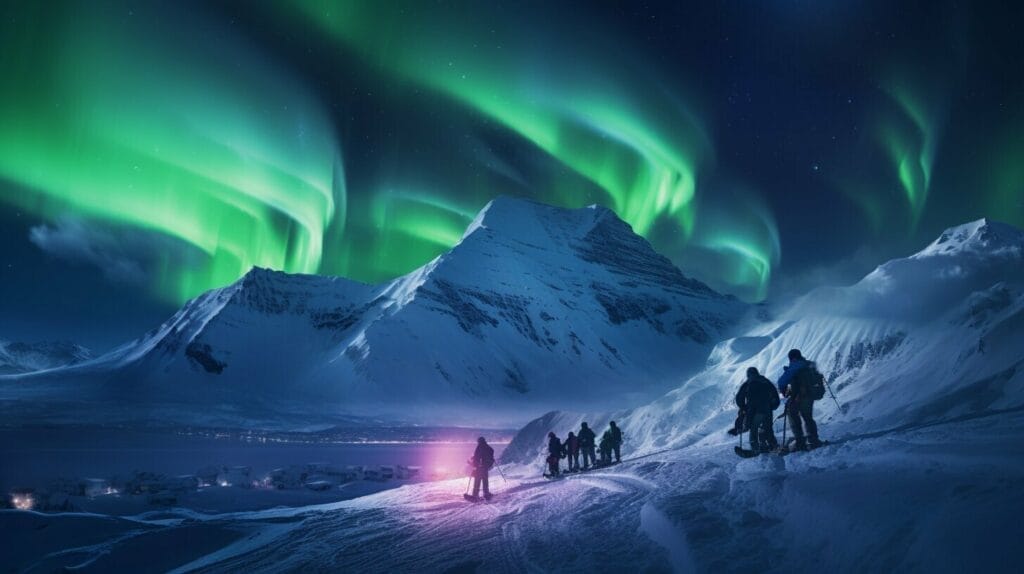
One of the most delightful aspects of Icelandic Christmas is the festive ambiance that fills the air. From the warm glow of candles to the sparkling lights that adorn homes and public spaces, there are several decorative traditions that create an enchanting atmosphere during the holiday season.
Festive Candle Decorations
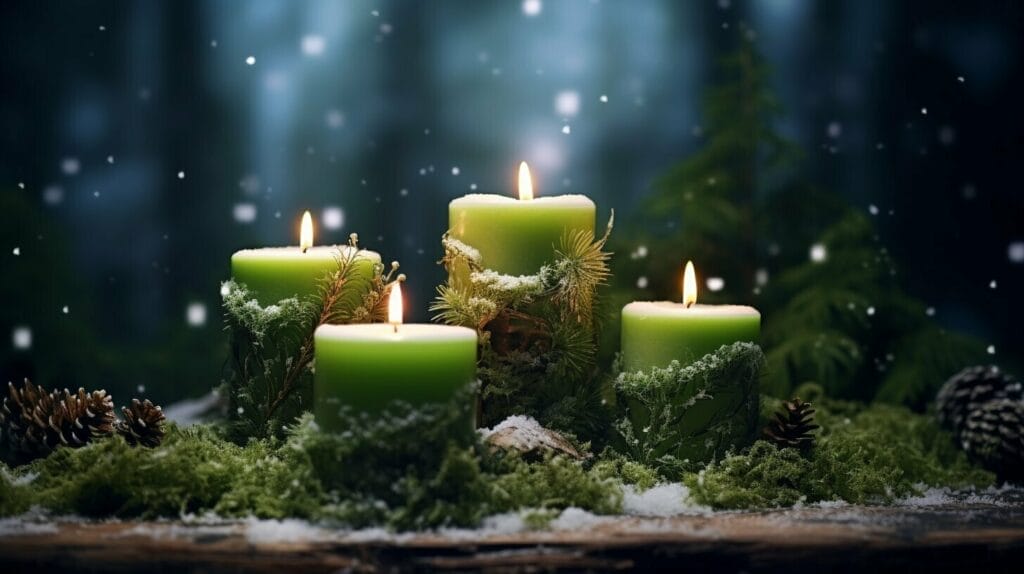
Many Icelanders create intricate candle displays in their homes, using a combination of tall and short candles in various shapes and sizes. These displays often incorporate festive motifs such as snowflakes, stars, reindeer, and angels.
Christmas Tree Rituals
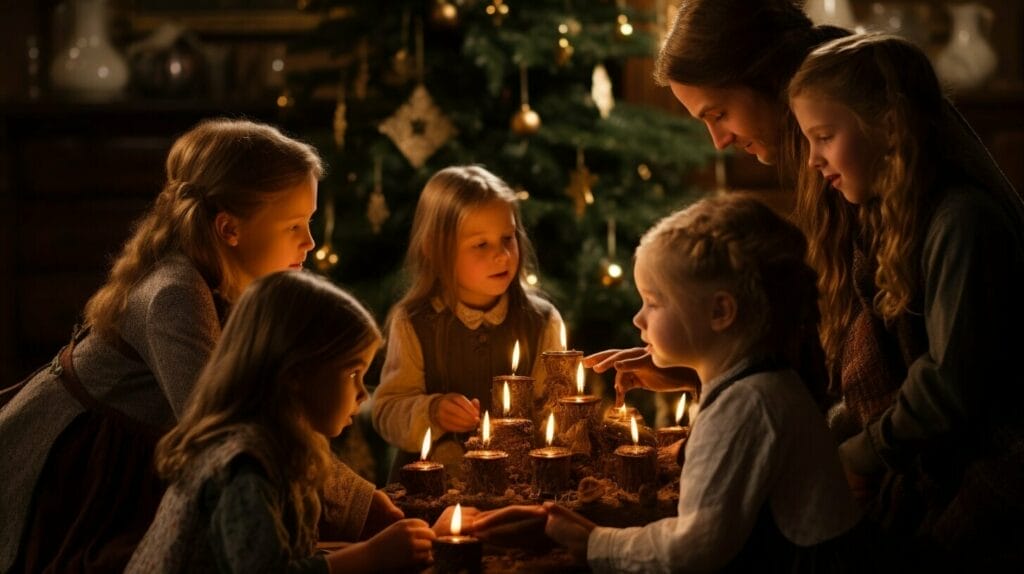
Many families bring home a fresh tree and adorn it with twinkling lights, colorful baubles, and handmade decorations. Some Icelanders prefer to create their own decorations, using materials such as felt, wool, and wood to create unique and personalized ornaments.
Snowflake Decorations
Snowflakes are a common decorative motif in Icelandic Christmas traditions.

Many Icelanders create intricate paper snowflakes to hang in their windows or use as table decorations. This delicate and intricate craft is a symbol of the winter wonderland that surrounds them during the holiday season.
Festive Wool Sweaters
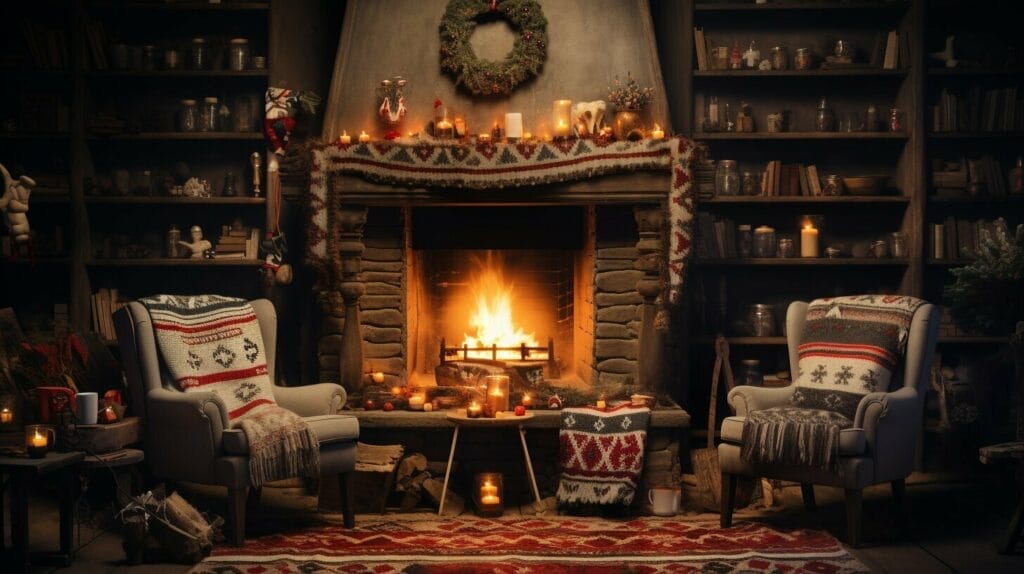
During Christmas time, many Icelanders wear festive wool sweaters adorned with patterns of snowflakes, Christmas trees, or other holiday motifs. These cozy sweaters are not only a fashion statement but a practical way to stay warm during the coldest months of the year.
Festive Light Displays
Light displays are another popular way to add a festive touch to Icelandic Christmas celebrations.

Many cities and towns throughout Iceland decorate their streets and public spaces with dazzling light displays, bringing a touch of magic to the winter darkness. Some neighborhoods even hold friendly competitions to see who can create the most impressive light display.
Christmas Trees and Decorations
Christmas trees and decorations are a beloved part of Iceland’s festive culture.

From the small tabletop trees to the towering outdoor displays, Christmas trees are a symbol of the holiday season in Iceland. The decorations that adorn them – baubles, tinsel, lights, and ornaments – are a reflection of the unique tastes and personalities of the people who decorate them.
Whether you’re admiring a candle display, enjoying the warmth of a cozy wool sweater, or admiring the dazzling light displays that fill Icelandic towns, the decorative traditions of Icelandic Christmas are sure to enchant and delight you.
Folklore and Superstitions
Iceland is rich in Christmas folklore and superstitions, which have been passed down from generation to generation. The Yuletide season in Iceland is home to mischievous creatures and magical tales that add an extra touch of wonder to the festivities.
Yule Lads Folklore
One of the most enduring Christmas traditions in Iceland is the folklore surrounding the Yule Lads. These mischievous characters are the Icelandic version of Santa Claus and are said to visit children every night in the 13 days leading up to Christmas Eve. Each Yule Lad is distinct and has its unique personality and tendencies.
| Yule Lad | Name | Tendency/Tradition |
|---|---|---|
| 1 | Stekkjastaur | harasses sheep |
| 2 | Giljagaur | hides in gullies and steals milk |
| 3 | Stúfur | steals and eats leftover food |
| 4 | Þvörusleikir | licks wooden spoons |
| 5 | Pottasleikir | steals leftovers from pots |
| 6 | Askasleikir | steals food from dishes |
| 7 | Hurðaskellir | slams doors at night |
| 8 | Skyrgámur | steals and eats skyr |
| 9 | Bjúgnakrækir | steals sausages |
| 10 | Gluggagægir | peers through windows to find items to steal |
| 11 | Gáttaþefur | sniffs around for laufabrauð |
| 12 | Ketkrókur | steals meat hanging from the ceiling |
| 13 | Kertasníkir | steals candles |
According to Icelandic folklore, if children misbehave during the holiday season, the Yule Lads will leave a potato in their shoes instead of gifts.
Jólakötturinn (The Yule Cat)
Another curious character in Icelandic folklore is Jólakötturinn or the Yule Cat. This giant feline is said to accompany the Yule Lads on their nightly visits and has a unique tradition of its own.
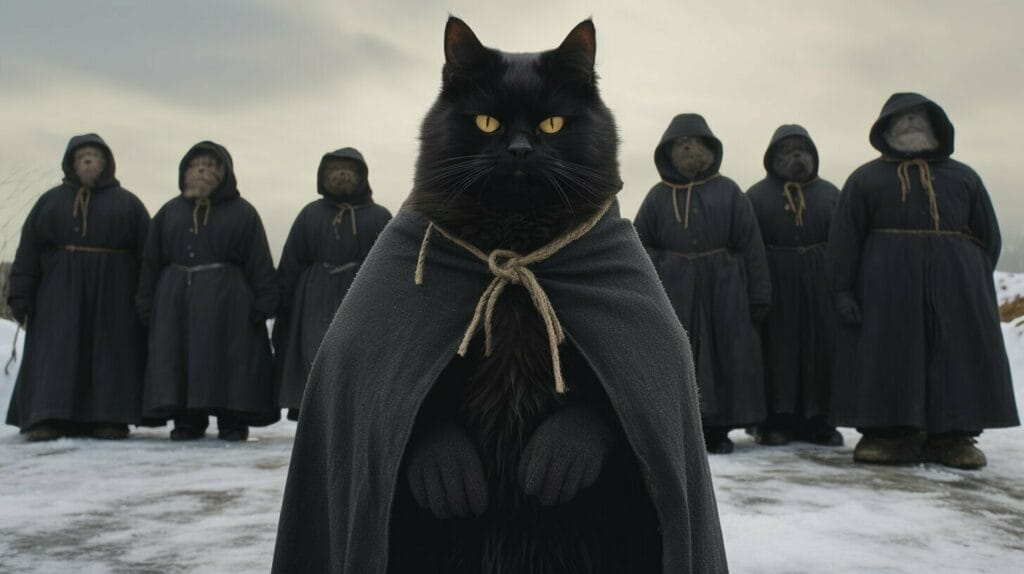
According to the legend, those who do not receive new clothes before Christmas Eve will be eaten by the Yule Cat. This superstition encourages people to give clothing as gifts during the holiday season.
Icelandic Santa Claus and Christmas Elf Beliefs
Icelandic Santa Claus, also known as Jólasveinar, is similar to the Yule Lads in their mischievous nature. Due to cultural and historical influences, Icelandic Santa Claus is more of a mischievous character who sometimes brings small gifts to children.
Another beloved figure in Icelandic folklore is the Christmas Elf. These tiny creatures are said to bring good luck to households during the holiday season and are often depicted in festive decorations around the house.
Grýla and Leppalúði
Grýla and Leppalúði are two other fascinating characters in Icelandic folklore. Grýla is a giantess who is said to kidnap and eat misbehaving children, while Leppalúði is her lazy and dim-witted husband.
According to legend, Grýla comes down from the mountains during the Yuletide season to search for naughty children. Icelandic parents use this story to encourage their children to behave during the holiday season.
Yule Log Traditions
The Yuletide season in Iceland is marked by a tradition known as the Yule Log. A large log is burned in the hearth from Christmas Eve until New Year’s Day to provide warmth and light throughout the holiday season.
According to folklore, the ashes from the Yule Log are said to have magical powers that protect the home from negative energies and grant wishes for the new year.
One of the most enchanting aspects of Icelandic Christmas is the stunning music and dance that fill the air during the Yuletide season. From traditional Christmas hymns to festive carol singing, there is an abundance of melodious entertainment to enjoy.
You can immerse yourself in the magical world of Icelandic carol singing and experience the joyous atmosphere of Christmas markets in Reykjavik. These marketplaces are a hub of activity during the holiday season, offering unique gifts, delicious food, and vibrant entertainment to visitors and locals alike.
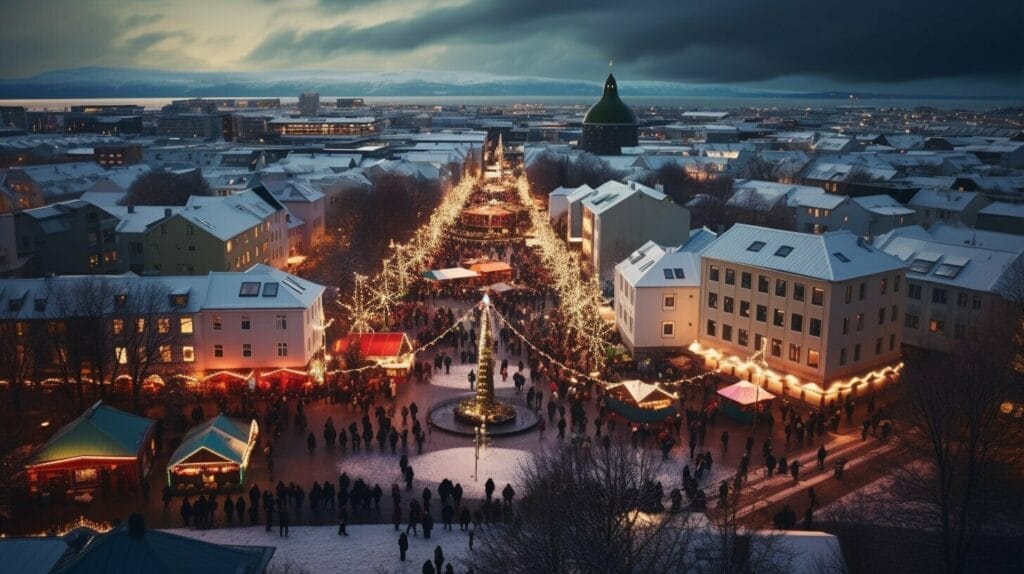
Whether you are looking for handmade crafts or one-of-a-kind souvenirs, you will find a plethora of options to choose from. And while you shop, you can enjoy the festive atmosphere created by the carol singing and musical performances. It’s an experience that you won’t soon forget!
Post-Christmas Traditions
While Christmas Day is the most significant celebration during the holiday season, the festivities in Iceland don’t end there. Post-Christmas traditions are an important aspect of Icelandic culture and are enjoyed by locals and visitors alike.
Twelfth Night Celebrations
Twelfth Night, also known as “the Thirteenth,” marks the end of the Christmas season and is celebrated on January 6th. Icelanders traditionally exchange gifts on this day, and it is also customary to take down Christmas decorations and the Christmas tree. The end of the festive season is bittersweet but marks the start of a new year of possibilities.
New Year Celebrations in Iceland
As the New Year approaches, Icelanders gather to bid farewell to the old year and welcome in the new with bonfires and fireworks. The tradition of New Year’s Eve bonfires dates back centuries and is believed to have originated from the custom of burning candles to ward off evil spirits.
Today, these bonfires have become a cherished part of Icelandic culture and are a symbol of unity and hope for the coming year. The bonfires are lit in public spaces, including parks and beaches, and locals gather around them to enjoy the warmth and light they provide. The largest bonfire is typically lit in Reykjavik’s neighborhood of Ægisíða and draws thousands of visitors every year.
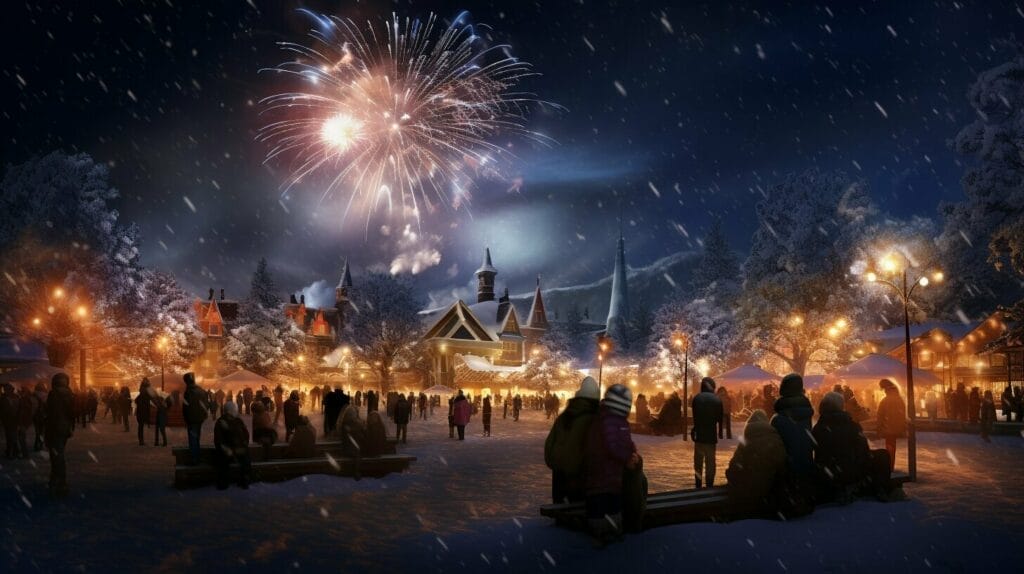
As the night progresses, the sky over Iceland comes alive with colorful fireworks displays. Locals take to the streets to light their own fireworks and join in on the celebration. It is customary to eat a large meal with family and friends before heading out to enjoy the festivities.
The spectacle of the fireworks is truly awe-inspiring, and the display often lasts well into the early hours of the morning. Iceland’s natural wonders provide a stunning backdrop for the colorful bursts of light, making for an unforgettable New Year’s Eve experience.
FAQ
What are some popular Icelandic Christmas traditions?
Icelandic Christmas traditions include pre-Christmas festivities, Yule town celebrations, traditional Christmas foods and drinks, Christmas Eve traditions, Christmas Day and Boxing Day customs, New Year’s bonfires and fireworks, Twelve Days of Christmas celebrations, winter snow activities, decorative traditions, folklore and superstitions, music and dance, marketplaces and fairs, and post-Christmas traditions.
What are some pre-Christmas festivities in Iceland?
Pre-Christmas festivities in Iceland include the use of Advent calendars and the enchanting display of lights to celebrate the winter solstice.
What are Yule town celebrations?
Yule town celebrations are vibrant community events in Iceland that come alive with music, dance, and traditional festivities during the holiday season.
What are some traditional Icelandic Christmas foods and drinks?
Traditional Icelandic Christmas foods and drinks include the intricately patterned flatbread known as laufabrauð, the warm and spiced glögg holiday drink, skyr dessert treats, and various dishes enjoyed during family feasts.
What are some Christmas Eve traditions in Iceland?
Christmas Eve traditions in Iceland include attending midnight mass in beautifully adorned churches, singing Christmas hymns in Icelandic, and partaking in customs and rituals with family.
How is Christmas Day and Boxing Day celebrated in Iceland?
Christmas Day in Iceland is a time for exchanging gifts, enjoying festive meals, and creating precious memories with family and loved ones. Boxing Day is a day of relaxation and reflection.
What are New Year’s bonfires and fireworks?
New Year’s bonfires and fireworks are ancient traditions in Iceland that welcome the New Year. Locals gather around bonfires to bid farewell to the old year and enjoy spectacular displays of light and color.
What are the Twelve Days of Christmas?
The Twelve Days of Christmas in Iceland are an extended holiday period filled with folklore and festivities. Each day has its own traditions, leading up to Twelfth Night.
What winter snow activities can be enjoyed in Iceland?
In Iceland, you can partake in snow activities such as skiing, snowboarding, ice skating, snowshoeing, and more amidst the stunning landscapes.
What are some decorative traditions during Icelandic Christmas?
Decorative traditions in Icelandic Christmas include the significance of candles, Christmas trees, snowflake motifs, festive wool sweaters, and the dazzling light displays that illuminate the streets and houses.
What are some folklore and superstitions surrounding Christmas in Iceland?
Folklore and superstitions surrounding Christmas in Iceland include tales of the mischievous Yule Lads and their mother, the fearsome Yule Cat, Icelandic Santa Claus, Christmas elves, and traditions associated with Yule logs.
What is the significance of music and dance during Icelandic Christmas?
Icelandic Christmas is celebrated through music and dance, including traditional Christmas hymns, carol singing, and festive marketplaces in Reykjavik.
What are some post-Christmas traditions in Iceland?
Post-Christmas traditions in Iceland include witnessing the awe-inspiring bonfires and fireworks that bid farewell to the holiday season and welcome the New Year.




